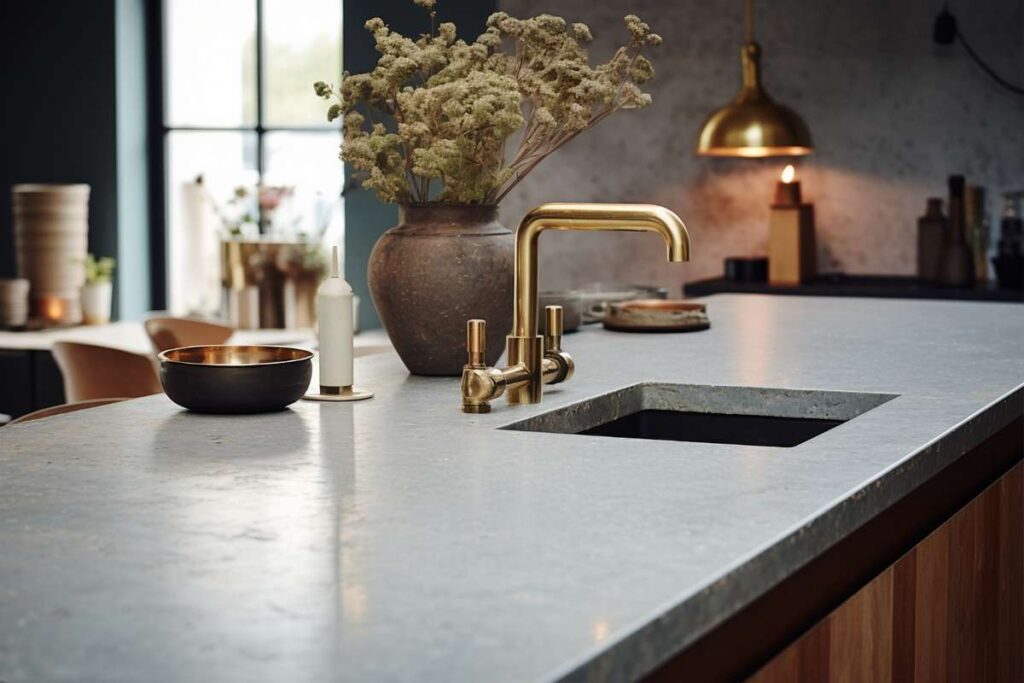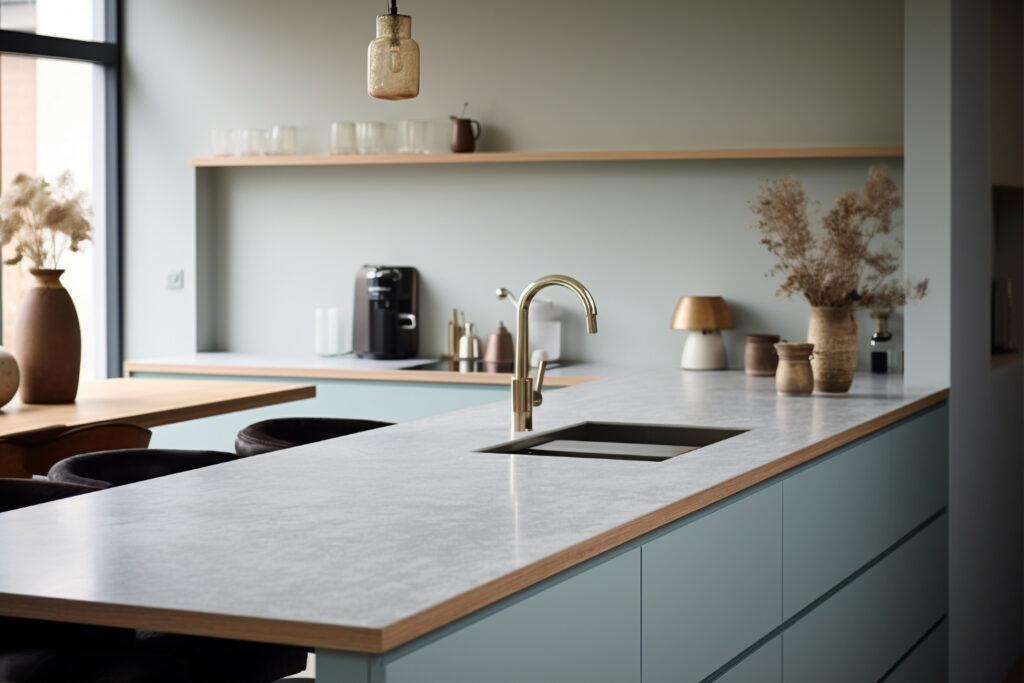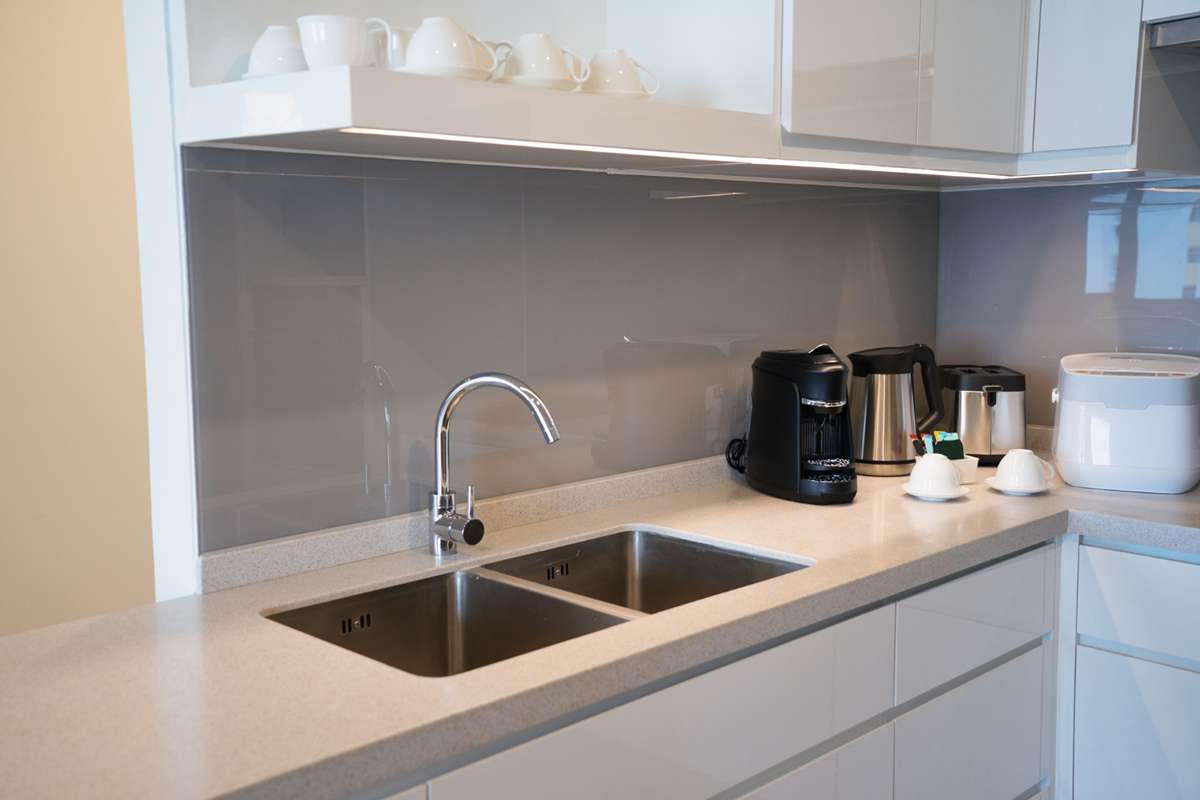A cement kitchen sink is a stylish and durable sink made from concrete or cement, offering a modern twist to traditional kitchen designs. These sinks are growing in popularity because they combine strength with a unique, customizable look that fits perfectly in both contemporary and farmhouse kitchens. Cement kitchen sinks are not only long-lasting but also resistant to heat and scratches, making them an excellent choice for busy kitchens. If you want a sink that stands out and lasts for years, a cement kitchen sink could be the perfect addition to your home.
What Is a Cement Kitchen Sink?
A cement kitchen sink is a sink made primarily from cement or concrete, which is poured into molds and then shaped to fit your kitchen space. Unlike traditional sinks made of stainless steel, porcelain, or stone, cement sinks offer a unique look because they can be customized in many shapes, sizes, and colors. The cement material makes these sinks very strong and durable. People choose cement kitchen sinks because they are long-lasting, resistant to heat and scratches, and add a modern, stylish touch to any kitchen. Plus, they can be made to match the exact design you want.
Cement Kitchen Sink Design Ideas
Cement kitchen sinks come in many beautiful designs that can fit perfectly in different kitchen styles. Whether you have a modern, rustic, or farmhouse kitchen, a cement sink can add charm and function. These sinks are highly customizable, allowing you to choose shapes, colors, and finishes that match your kitchen’s look.
Here are some popular design ideas for cement kitchen sinks:
- Modern Minimalist: Smooth surfaces with clean lines and neutral colors like gray or white.
- Rustic Charm: Rougher texture and earthy tones to blend with wooden cabinets and natural decor.
- Farmhouse Style: Large, deep sinks with a matte finish, perfect for farmhouse kitchens.
- Colored Finishes: Cement sinks can be tinted in colors like black, beige, or even pastels to stand out.
- Unique Shapes: From rectangular to round or custom sizes, you can get the exact shape you need.
Concrete Kitchen Sink Pros and Cons
When thinking about a cement kitchen sink, it’s important to know both the good and the not-so-good points. Here are the main advantages and disadvantages to help you decide if it’s right for your kitchen:
| Pros | Cons |
| Durable and long-lasting – Cement sinks can last many years without damage. | Heavy – Cement sinks are much heavier than metal or porcelain sinks. |
| Custom designs – You can choose shapes, sizes, and colors to fit your kitchen style. | Potential cracking – If not properly sealed, cement sinks may develop small cracks. |
| Heat resistant – They can handle hot pots and pans without damage. | Maintenance required – Needs regular sealing to keep water and stains away. |
| Unique look – Each sink has a one-of-a-kind appearance due to the cement’s natural texture. | Installation difficulty – Requires professional help due to weight and material. |
How to Make a Concrete Kitchen Sink: DIY Guide
If you like hands-on projects, making your own cement kitchen sink can be a fun and rewarding experience. Here’s a simple step-by-step guide to help you create a beautiful and durable sink at home.
Materials Needed:
- Cement or concrete mix
- Water
- Mold (wood or plastic) for the sink shape
- Reinforcement mesh or wire
- Concrete sealer
- Sandpaper or smoothing tools
- Safety gloves and mask
Steps:
- Prepare the Mold: Build or buy a mold that matches the size and shape you want for your sink. Make sure it’s smooth inside to avoid rough surfaces.
- Mix the Concrete: Follow the instructions on the cement bag. Mix cement with water until you get a thick, smooth paste.
- Add Reinforcement: Place mesh or wire inside the mold to make the sink stronger and prevent cracking.
- Pour the Concrete: Carefully pour the mix into the mold, making sure to fill every corner. Tap the sides to remove air bubbles.
- Cure the Sink: Let the concrete dry slowly for at least 48 hours. Cover it with plastic to keep moisture in, which helps it cure properly.
- Remove the Mold: Once dry, gently take off the mold. Smooth the edges with sandpaper if needed.
- Seal the Sink: Apply a concrete sealer to protect the sink from stains and water damage.
Safety Tips:
- Always wear gloves and a mask to avoid breathing in dust or touching wet cement.
- Work in a well-ventilated area.
- Keep children and pets away from your workspace.
What Is a Concrete Farmhouse Sink?

A concrete farmhouse sink is a cement kitchen sink designed to match the classic farmhouse style, which is all about simplicity, comfort, and rustic charm. Farmhouse sinks are usually large and deep, perfect for washing big pots and pans. When made from cement, these sinks add a modern yet natural look that fits beautifully in farmhouse kitchens.
Using a cement sink in a farmhouse kitchen offers several benefits. Cement sinks are very durable, heat resistant, and customizable, allowing you to choose colors and finishes that blend with wooden cabinets and rustic decor. Compared to other farmhouse sink materials like porcelain or stainless steel, cement sinks provide a unique texture and a heavier, more solid feel.
Maintenance Tips for Cement Kitchen Sinks
To keep your cement kitchen sink looking great and lasting a long time, proper care is important. Here are some easy tips for cleaning and maintaining your cement sink:
- Clean regularly: Use mild soap and warm water with a soft cloth or sponge. Avoid harsh chemicals or abrasive cleaners that can damage the surface.
- Avoid standing water: Wipe the sink dry after use to prevent water stains or damage.
- Use a sealer: Applying a quality concrete sealer helps protect the sink from stains, water, and cracks. Seal your sink every 6 to 12 months, depending on use.
- Prevent cracks: Avoid dropping heavy objects in the sink. Also, don’t expose the sink to extreme temperature changes suddenly, which can cause cracks.
- Handle stains quickly: If you spill coffee, wine, or oil, clean it immediately to prevent permanent marks.
Why Choose a Cement Kitchen Sink in 2025?

In 2025, cement kitchen sinks are becoming more popular than ever, and experts agree this trend is here to stay. One big reason is their sustainability and long-lasting quality. Unlike plastic or metal sinks, cement sinks are made from natural materials that have a smaller environmental footprint. They don’t rust or wear out quickly, which means fewer replacements and less waste.
Environmental benefits of cement sinks include:
- Made from abundant, natural raw materials.
- Can be recycled or repurposed after years of use.
- Lower carbon footprint compared to manufacturing metal or plastic sinks.
Many designers and kitchen experts recommend cement sinks because they combine durability with eco-friendliness. For example, a well-known kitchen designer notes, “Cement sinks offer a timeless look while being kind to the planet.”
FAQs
1. Are concrete kitchen sinks good?
Yes, concrete kitchen sinks are very durable, heat-resistant, and can be customized to fit any kitchen style.
2. What are the disadvantages of a concrete sink?
They can be heavy, need regular sealing, and may develop small cracks if not cared for properly.
3. Can you use concrete for a sink?
Yes, concrete is a strong and popular material for sinks, especially for custom designs.
4. Are concrete sinks hard to clean?
No, they are easy to clean with mild soap and water, but harsh cleaners should be avoided.
5. How long does a cement kitchen sink last?
With proper care, a cement sink can last 10 years or more.
6. Is sealing necessary for concrete sinks?
Yes, sealing protects the sink from stains and cracks and should be done regularly.
Conclusion
A cement kitchen sink is a strong, stylish, and versatile choice for modern kitchens. From various design options that fit rustic, farmhouse, or contemporary styles to the practical pros and cons, cement sinks offer something unique. Whether you want to buy one or try a DIY project, these sinks are durable and customizable. With simple maintenance tips like regular cleaning and sealing, your cement kitchen sink can last for many years.










